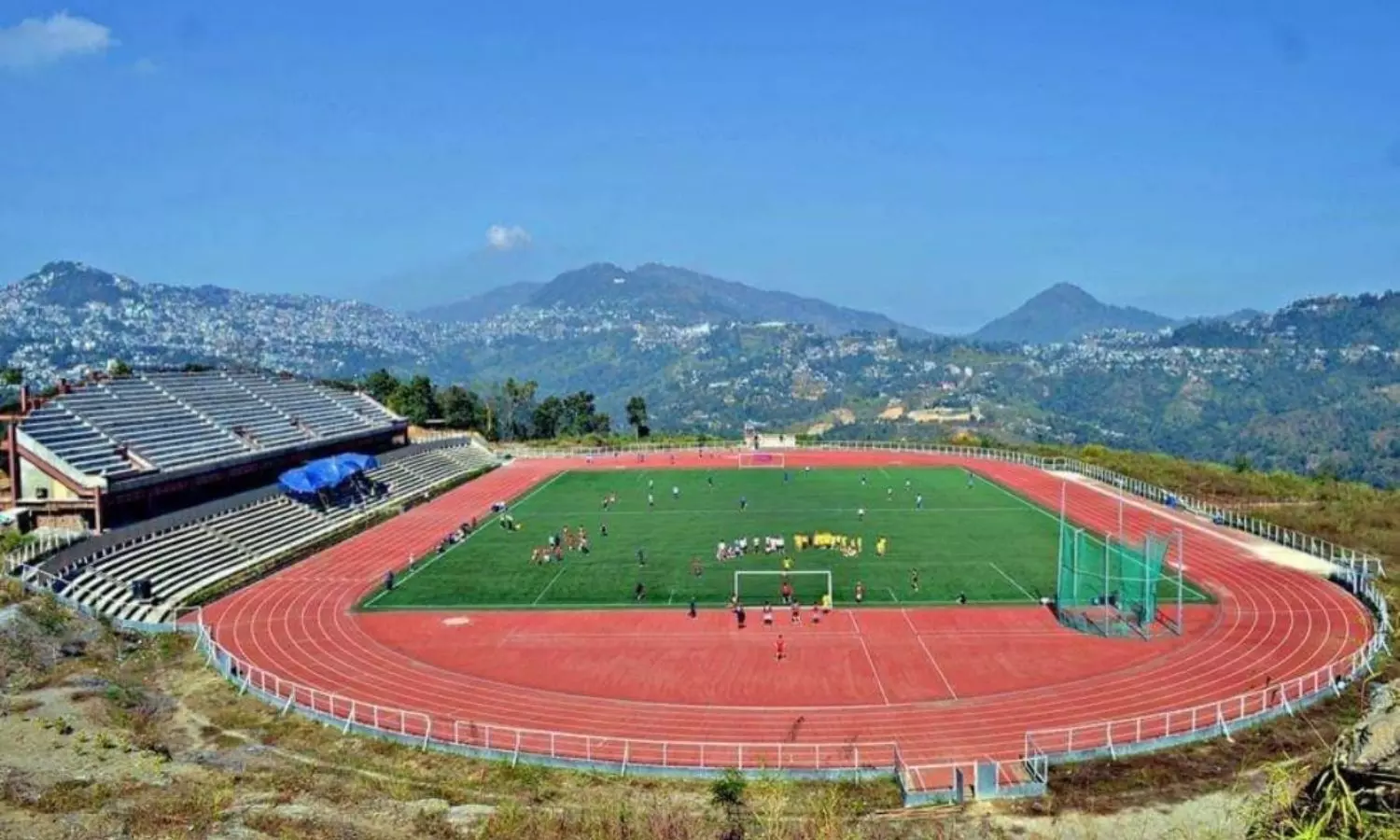Sports Market
The sports infrastructure market: Worth hundreds of crores and growing
Although new and fragmented, a slew of factors are now driving demand for sports infrastructure providers in India.

With shrinking urban spaces, improvisation is essential to create sporting facilities (Representative image).
When Sunil Chhetri announced his decision to hang up his national boots, questions about his successor were rife. For a country as large as India and packed with unending passion for the game, surely a younger version of Chhetri is developing in a school playground somewhere.
That said, one look at the statistics pertaining to playgrounds and eyebrows are bound to be raised.
Per, the 2021-22 UDISE+ report, 23% of schools in India do not have a playground for children who study there. That is a whopping 3.4 lakh schools from a total of 14.8 lakh in the country.
As for the condition of the 77% that do have playgrounds, there is no data to that effect.
Legislation driving change
A 2022 study revealed that across 27 Indian states, 25% of adolescents did not meet the moderate-to-vigorous physical activity (MVPA) guidelines. While most schools do employ some form of physical education, sports infrastructure, or lack thereof, hampers the development of a child.
That said, legislation such as the Right of Children to Free and Compulsory Education Act, 2009 (RTE), which deems playgrounds an essential infrastructural necessity in schools, looks to mandate educational institutions into safeguarding the interests of students.
And then there is the Supreme Court order, delivered on March 3, 2023, by a bench composed of Justice MR Shah and Justice BV Nagarathna, which states that ‘there cannot be any school without a playground.’
Also, the University Grants Commission (UGC) mandates higher education institutes to create functioning outdoor and indoor sports facilities and infrastructure such as a state-of-art gymnasium and yoga center, all on the campus.
With legislation and mandates driving educational institutions into action, the sports infrastructure industry is gradually witnessing momentum in the country.
A burgeoning industry
“The private market, hypothetically, for the entire country, is worth a few hundred crores if not a few thousand crores,” said Maharishi Sridhar, CEO of a Bangalore-based sports infrastructure provider, in a conversation with The Bridge.
For educational institutions that strive to attract students every year, a top-rating from accreditation agencies is a must and sporting facilities now feature prominently in the rating criteria.
“A school that we worked with had a mandate to build an indoor complex and spent 8-9 crores for a multi-sports indoor facility for basketball, volleyball, etc,” Sridhar explained.
While the demand is clearly there for providers of sports facilities, the market is fragmented.
An unorganized market
At the moment, infrastructure service providers doesn’t necessarily specialise in sports.
Owing to experience in the real estate and construction industry, an individual or a company might come in and take up a project that might involve anything from laying out an artificial football turf on a playground to drawing up a tennis court at a university.
That said, very few, Sridhar explains, are run as a corporate enterprise.
“Professionally run sports infrastructure companies are just a handful, perhaps four to five. The rest of them are merely businesses that take up surfacing projects.”
The need in the marketplace, therefore, is for providers to offer end-to-end solutions to customers - the educational institutions and universities.
While most of them wish to comply with norms and have budgets, they seek turnkey-support in the form of design, development and execution of a multi-purpose facility for better return on investment.
And that is where providers that can design a bespoke business plan and thereafter, execute the project whilst hand-holding the customer, are sought after.
New horizons
With shrinking urban spaces, access to sports facilities is increasingly depleting.
In Bangalore for instance, building rooftops of schools are now being turned into multi-sports facilities that are occasionally thrown open to the public after school hours. And therein lies an opportunity, according to Sridhar, for educational institutions to fill the playground-gap in cities.
“Once they are given the foresight, with a business perspective, they are open to it,” he said.
Educational institutions notwithstanding, wealthy families and conglomerates are also contributing to a spurt in the sports infrastructure market.
“They want to do it purely for the public to use and for them to look at it as another business, while giving back to sports,” concluded Sridhar.
With multiple levers driving growth, the sports infrastructure industry is on course for unprecedented growth in the country.
The sporting fraternity, meanwhile, will only hope for easy access and pray for affordability in usage, just so Chhetri 's successors can take form at the grassroots.






